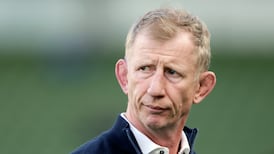Sport is about dreaming. Bertie Ahern understood that. Looking back now his dream of the "Bertie Bowl" was almost given life, but instead became a symbol of political trench warfare along a boom-to-bust faultline. During that time at the turn of the century anything was possible and then nothing was affordable.
It has been 20 years since PricewaterhouseCoopers first carried out a feasibility study for a national stadium in 1999. Growing out of that legacy issue has been a slow process.
The name “Bertie Bowl” carried with it estimated costs that seemed to double each time they were calculated.
It was first thought that the former taoiseach's monument to prosperity would cost over €300 million. Civil servant Paddy Teahon, who headed up the project, chimed in with €444 million. A later report carried out by London firm High Point Rendel put the price in 2002 closer to €900 million. Who to believe?
Taking it to another level, the outgoing attorney general of the time and president of the Progressive Democrats, Michael McDowell, accused Ahern of attempting to create a “a Ceausescu-era Olympic project”.
Ultimately, the rubber never hit the ground. Following a series of political fandangos and a 2002 climbdown a fatigued IRFU and FAI finally swooned into each other’s arms in a joint partnership to redevelop Lansdowne Road with State funding in 2007. Any iterations of a standalone 80,000 or 65,000 all-seater national stadium on the grounds of Abbotstown House died there and then.
When Ahern finally left office in 2011 Ireland’s unbuilt cathedral to sport was one of his regrets. His critics held it up as a bullet dodged, an expensive folly the country narrowly escaped building. It later emerged in the Public Accounts Committee that €43 million was spent on the repeatedly revised plans. All on a project that had only ever lived in a politician’s mind.
But the less grand ideas, some of the ones which had been included in the original blueprint and lost in the political faction-fighting, emerged intact from the smoke and ashes.
In 2009, Fingal County Council granted planning permission to the then National Sports Campus Development Authority to build a range of facilities and from the corpse of the “Bertie Bowl” something encouraging began to take place.
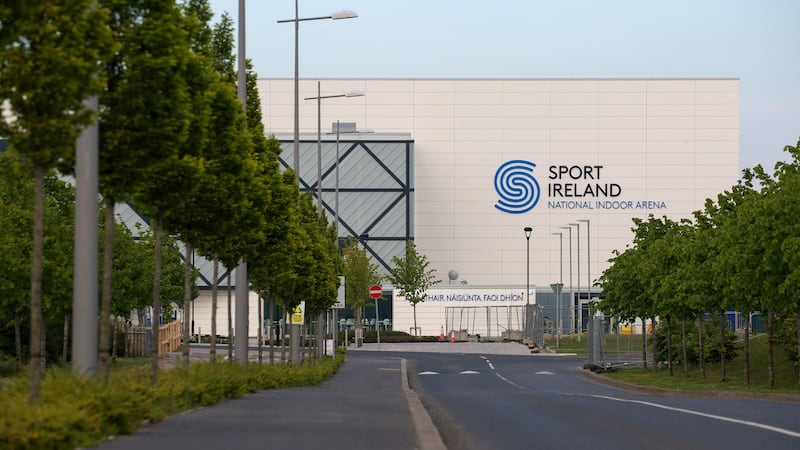
Now Sport Ireland Campus in Blanchardstown has quietly delivered over the last decade on something for which we have all paid. While the current campus might be less of a big-ticket statement than a monster stadium, its ultra modern aspect over 500 acres in west Dublin is not by any stretch modest.
In the public consciousness it holds a low profile as the various pieces have slowly rolled out around the acres from the first build in 2003, the initially troubled National Aquatic Arena.
But now Sport Ireland Campus has put on muscle, looks more conditioned for a championship run, and is beginning to take hold of sport in Ireland.
Many of the large infrastructural projects have been completed and while there remains more work to be carried out on a cricket stadium, an outdoor athletics track, indoor and outdoor tennis courts, and a velodrome on which construction is expected to start early next year, the landscape has developed into something impressive without being brash.
"We are excited about it," says Sport Ireland chief executive John Treacy. "What you have on campus are sporting facilities that care for everyone in Irish life, whether you be a participant or a high-performance athlete.
“You have an indoor arena now that caters for lots of sports including track and field, including gymnastics, including basketball, badminton, table tennis. Anything can be catered for in it.
“Then coming down the track and to be opened in June is our field sports indoor arena, which is a half-sized rugby pitch, a full -sized soccer pitch and it will be utilised by all the field sports. That’s all there.
“You have soccer, you have rugby, you have modern pentathlon, the Sport Ireland Institute catering for world class services for our athletes.
“We will have the European Cross Country Championships here on the campus next year and again it is about having world class facilities that Ireland can be proud of.
“The first master-plan is done. What we are doing now is reviewing the master-plan. We will be consulting with the sports around that. We still have lots of land to develop. We are ambitious.”
The National Indoor Arena cost €38 million. Phase Two of that with the indoor rugby and soccer pitches cost in the region of €20 million. The relayed synthetic hockey pitch is soon to be ready at a cost of €600,000 as the Irish women hope to emulate the men’s team and qualify for an Olympic Games. Cricket’s high performance facility, not including the stadium, cost €600,000.
The Sport Ireland Institute cost €3.98 million and a further €721,000 to kit out. The proposed velodrome and badminton centre will come at between €15 mullion and €20 million. The costs are high but are mitigated as they arrive in bite-sized chunks. Funding for the velodrome is in place.
There is also a commercial side to using the facilities that generates money. For 2017 the total income raised was €6.6 million. The Aquatic Centre had €1.15 million of business coming through its doors in 2018. The indoor arena drew 450,000, while 102,000 people used the synthetic pitches during 2018.
But the romantic end of the campus and what powers the project is the athletes and the idea of a dream factory, the belief that walking through the gates and along the broad boulevard feeds into a positive state of mind. If you need it and you have the talent, the facilities are here for you. It’s function is to remove excuses, change perceptions.
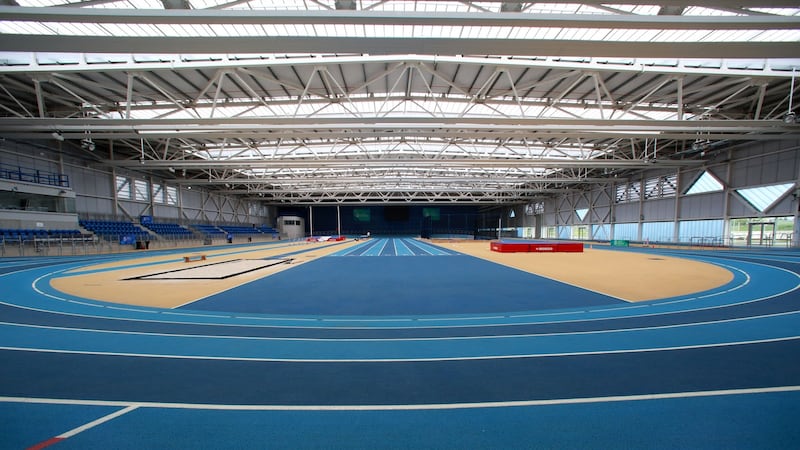
Some come and go. Some regularly use the facilities. Some like European gold medal -winning gymnast Rhys McClenaghan base themselves on campus full time, staying in a locally Monday to Friday and home to Belfast at weekends.
When the All Blacks rugby team were last in Ireland, they stayed in Blanchardstown and used the high performance gym.
In September, Irish rugby, which has committed to moving to the SIC, will have three outdoor pitches and in June a half-sized, bespoke synthetic indoor pitch will be completed. Lineout drills in the ballroom of the Shelbourne Hotel will be a thing of the past.
The visibility of high-profile athletes using the facilities is important to the project for credibility, for the atmosphere of excellence, and for the exchange of ideas. When the IRFU were deciding to move one of the positive aspects for them was the communal area in the Sport Ireland Institute, where athletes from different sports meet and talk. They have a name for it - “social ecology.”
“When you have the All Blacks here and they come back again a second time and they want to be here and want to use pitches, it’s a real endorsement,” says Treacy.
“The Sport Ireland Institute has enabled all of these sporting people to meet each other on a regular basis. That happens all the time. So when you go to an Olympic games now everyone knows each other.
“That’s a big factor. They are not working in splendid isolation anymore. There is a critical mass of athletes here that are thinking along the same lines, that are reaching for the same world stage and that is a critical kind of environment.
“When I went to Los Angeles the only people I really knew were the track and field people. It’s totally different, totally different. I suppose the funny thing about athletes is that they don’t really want to be around people they don’t really know leading into a big event. That’s a natural way you would feel.
“You want to be comfortable around people. So I wouldn’t have stayed in the Olympic Village leading into the races. I stayed outside the village. Now all the athletes know each other. They are comfortable in each other’s company. So it’s a big piece.”
The Sport Ireland Institute is the only building on campus that does not have a participation or community remit. It is exclusive to the elite with a primary responsibility to elite, funded athletes. Of 106 such athletes in 28 teams, 78 used its services last year.
The Institute has a kitchen at its centre, the homely seen as another part of the performance patchwork quilt. Educational programmes are conducted in the kitchen space. There’s a congregation area, a number of meeting rooms for the National Governing Bodies, a fully equipped medical suite with a phlebotomy service, everything bar major diagnostics and imaging.
The middle of the building is a mixed training area for a range of things. Teams come in and do shuttle runs, testing, their warm ups. The boxers do their shadow boxing and drills. There’s a running track with a jumping pit, which track and field athletes use on a regular basis. The main area of the building is the large strength and conditioning zone.
"We've had very good testimonials around the quality of facility from the likes of the Dublin football team," says its director Liam Harbison. "The All Blacks were praiseworthy of being able to have the whole team train together in a relatively private environment and not having to amend the equipment for their needs."
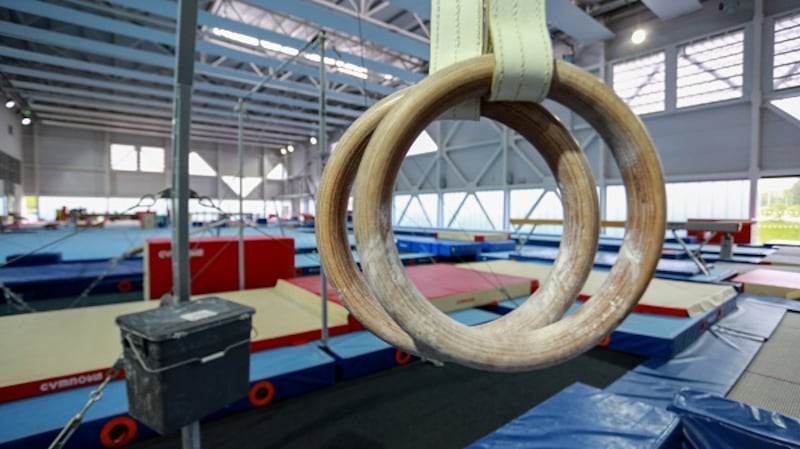
There’s also a bespoke facility for the boxers with four training rings, one competition ring, and a range of bags. There’s a steam-room, sauna, hot and cold treatment baths.
But it’s is not all just about the hardware. The ambition is to create a hub for the Irish high-performance community and with it the installation of a thriving centre around the listed Abbotstown House and its walled garden. They want more a beating heart and less a business park.
"Over the last 10 years spending has been on those large functional spaces," says development director Tony Lawless. "The next 10 years is about providing the identity to the campus, creating a centre or sports village where people can relax, hang out. There will be accommodation to stay on campus and the ability for teams to come in, train, and utilise the resources in a conducive environment whereby we create a sports hub."
A five-star hotel on site is also planned. If teams from rugby and soccer are drawn in, upscale accommodation is a basic need. The FAI currently bus in from a local hotel. The IRFU will do the same. Gymnast McClenaghan stays locally in a house rented by Gymnastics Ireland.
“The actual value of physically building a home for sport in Ireland is much more profound than I would have thought,” says Paul McDermott, director of high performance. “Not only the scale of the investment. But it’s a big symbolic spend for Irish sport, a large facility like this in the capital city, near the airport.
“But if you have a big facility in west Dublin and it’s a command and control model, it won’t work. It will still be 500 acres of nice facilities beside the M50. Ultimately, this is about a governing body saying that’s where I want to be. That’s where I want to put my flag in the ground. If the governing bodies come in here with a strong plan and a vision it will be transformational.
“Swimming is a good example. The swimmers want to be here. Their thinking is we want to build something that people want to opt into. This is where they need to be in order to be what they want to be. If there’s a talented swimmer and they want to stay in American that’s fine. That’s their choice. But is there a compelling offer here.”
It does get flack for centralising sport. But so many of the facilities are multifunctional and the sense of cross-pollination between sports is seen as desirable. Athletes can also use several facilities on one site, the modern pentathletes with their fencing, swimming, riding, shooting and running, and the boxers with their weights, running and rings all in one place, creating a synergy.
Next year the directors, the planners, the coaches, the nutritionists, the physios, the strength and conditioners, and the athletes, hope to see between three and five medals at the Tokyo Olympics. It's the only measure people know. Maybe golfer Rory McIlroy, maybe gymnast McClenaghan, maybe boxer Harrington, maybe rowers Gary and Paul O'Donovan, and Sanita Pospure, maybe swimmer Shane Ryan.
Far from being a building project existing in the heads of the political elite, blocks have also being laid in hearts and minds. Even if that is the sum total of what the Sport Ireland Campus has achieved to date, then change is already happening.
In Their Own Words - What Abbotstown means for elite athletes
Kellie Harrington - Boxer
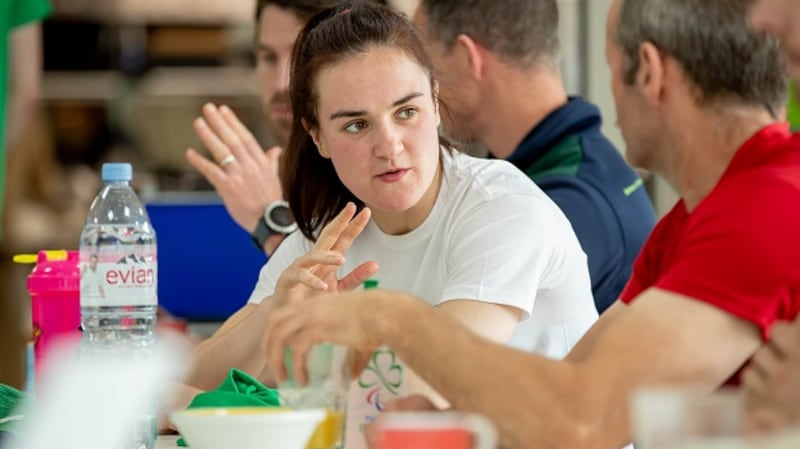
The Irish lightweight (60kg) became the world champion last year, stepping seamlessly into the shoes of Katie Taylor. Despite the current disarray in world boxing she now has her sights firmly fixed on winning a gold medal in 2020 at the Tokyo Olympic Games.
I am a world champion boxer. Sport Ireland Campus facilities have helped me so much since basically 2016. Before Rio I would have been out here training. Why? Because they have literally every single thing that I need and the Irish boxing team needs all on one campus for our training weeks. It means we don’t have to move anywhere. That makes lot a lot easier. A massive thing is that there are actually other people out here too. It’s not like we boxers are just surrounded by each other.
The other people out here mean we are able to get a bit of a break away from boxing, shares stories. You know it is not always switched on, switched on. You can meet other people. While we are all in different sports I think we share the same vision. We are all in the one tunnel, all trying to get to the end. We have five boxing rings available to us and one of them is a bigger ring so we can do test matches and stuff in that one. It means we don't have to go outside for that. We have our top class strength and conditioning with top class coaches. The nutrition is on campus as well - Sarah Madigan and Danielle Logue, they are all on campus.
We get our food delivered here from Gourmet Food Parlour and then on Wednesdays and Fridays there’s breakfast in the morning for us. Everything is here. The team stays just down the road so everything is close by. It’s perfect. We also use the indoor arena for track sessions. It fantastic but I have to say I get the fear the night before the running session. I can’t sleep. Once you get through a Wednesday the rest of the week is easy. But to able to jog from the institute to the indoor arena in less than five minutes, where would you get it?
Orla Walsh - Track Cyclist
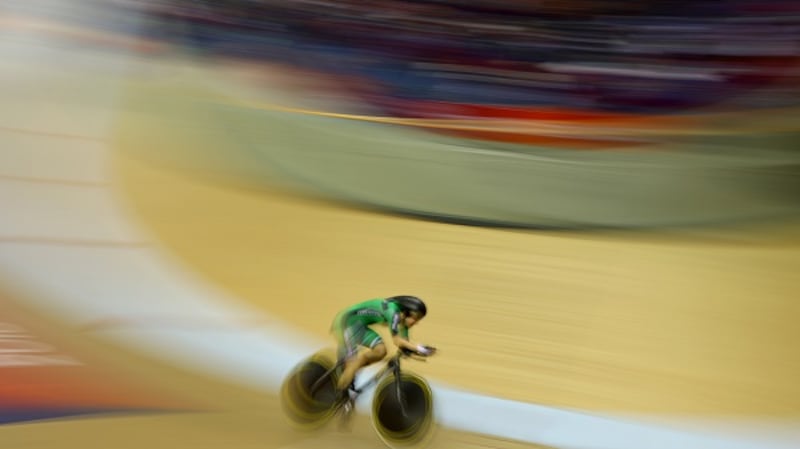
Party girl to elite athlete, Walsh captured her life of smoking and drinking on Instagram before becoming a poster girl for change. A few years later after commuting to college by bike she joined Orwell Wheelers. She now aspires to beat the best cyclists in Europe on the track.
To be honest this is one of the only facilities I’ve used in my track career because I am only new to sport. But it’s absolutely fantastic. It’s incomparable actually. I’m in here working alongside other athletes from all different sports which is really cool. My main objective in here is working with a coach on strength and conditioning. He has been working with me for the last year and a bit. I am learning a lot about lifting and getting stronger as well as the nutritional support which helps me a lot. I am getting advice and I’m learning a lot about how to be an athlete.
It is not just the training. It’s about the full service support we get. We have had physiologists working with us so we have learned a lot more about what type of athlete I am. I am more of a sprinter type than an endurance type. That’s given my coaches the information about how to get the best out of me. We’ve also had sports psychology which has been fantastic, especially for someone like me who didn’t have any experience of being in competition or dealing with the pressure and stress of that, of dealing with a team environment or how to work well together.
It’s the whole picture, not just training really hard. Everyone here has the same big goals in mind. You want to be the best. I feel privileged that I’m here and part of an elite squad that has access to these types of services.
Rhys McClenaghan - Gymnast
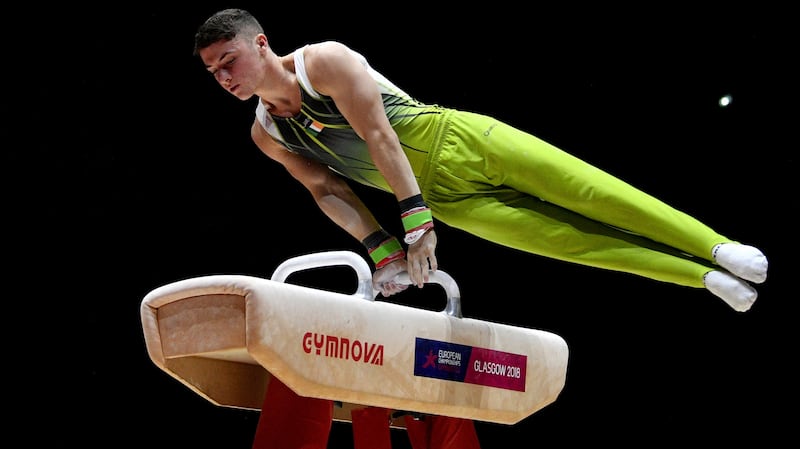
McClenaghan won the pommel horse gold medal at the 2018 Commonwealth Games and the 2018 European Championships, beating reigning Olympic champion Max Whitlock on both occasions. He is the first Irish gymnast to compete in a European final and to win a European medal.
My event is artistic gymnastics and my speciality is the pommel horse event. I am now getting into more of a routine about coming from Belfast to Dublin and getting into the work mode. My main focus is just to do my job here. I pretty much use every single facility that I can from nutrition to psychologists. I try to get the most out of everything that the institute has to offer. Every little 1 per cent matters when it comes to performing. So I try to use everything possible in this place.
Last year I went under surgery and that was a new experience for me. It was very good to have the support here from the doctors and physios who helped me out on my rehab journey to get me back to full fitness. Also, the likes of the psychologists that pushed me through those barriers. It was a different experience and a very tough experience to go through so to have people like support you . . . I’d use the gym a lot. I’d come into the gym every morning, prepare my body. I used it throughout my whole rehab journey.
After that I go across the road to the gymnastics centre which is walking distance on campus. It’s a perfect scenario to be in. I haven’t seen anything like these facilities if I am honest. I hear about facilities that can match them but I haven’t seen myself anything that can match them. I know there is some talk of other countries coming to train in it. That shows the international reach that we are getting to.
Sport-By-Sport - How Irish sport benefits
Aquatics
The National Aquatic Centre was the first facility to open at the site in 2003 and has hosted the 2003 Special Olympics World Summer Games and the European Short Course Swimming Championships. The high-performance unit was launched in 2010 with the elite Irish swimmers now accustomed to a 10-lane 50-metre international standard swimming pool with moveable floors which allows it to be reconfigured for other uses. There is also a 25-metre international standard diving and warm-up pool, with seating for 2,500 spectators. It attracts over one million visitors a year.
Athletics
The National Indoor Arena is possibly the flagship of the site and houses a number of sports as it can be configured as required. The centrepiece of the building is the 200-metre indoor running track, partly laid on hydraulics, which means the bends can be raised for competition purposes, or else levelled, allowing the floor space to be used for a variety of other sports. Talk of an indoor track had been discussed for years. It was a long time coming but it has been worth the wait.
Boxing
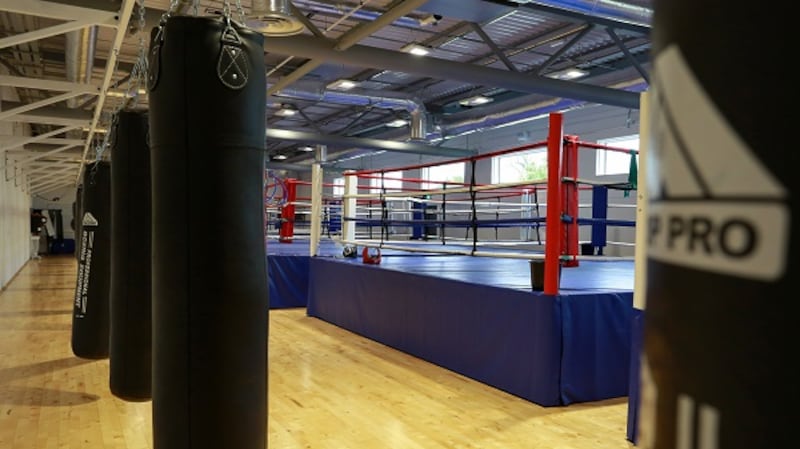
The boxers have finally departed the evocative but ageing National Stadium for the pristine Sport Ireland Institute. With five boxing rings, including a bigger ring that can be used to host events, everything the boxers need is housed here. They have medical back up, psychology, a strength and conditioning zone and a kitchen to cook and eat the food they require. They can also use the nearby indoor arena for track running drills and training. Boxing has delivered more medals than any other Irish sport with World Champion lightweight Kellie Harrington a regular at the facility.
Gymnastics
Opened in 2017, Irish gymnastics has finally found a home and with Rhys McClenaghan one of the best in the world on the pommel horse, the National Gymnastics Training Centre is attracting more attention. Located in the vast indoor arena, it is a bespoke facility where the high-performance athletes are based and for the first time contains all of the equipment needed for elite performers. The hall is 1,625 square metres and is considered to be one of the best of its kind in the world.
Gaelic games
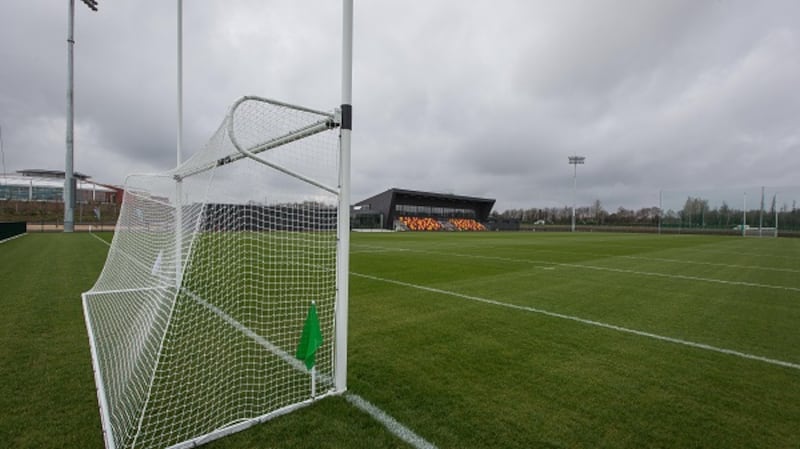
The GAA’s National Games Development Centre was officially opened on the campus in 2016 and is one of the first sports facilities the public sees coming into the campus. The project included the building of five playing pitches - four of them full size and all of them floodlit. There is also a 3G pitch, a hurling wall and a pavilion which houses 10 dressing- rooms, a reception area and gymnasium, as well as associated facilities for physiotherapy, referees, meeting rooms and dining facilities. A covered seated spectator area adjoining the pavilion can cater for 400 people.
Soccer
The Football Association of Ireland moved with its staff to its headquarters on campus in 2007 after over half a century in Merrion Square. As well as offices located on the northeast of the site, the national team has made use of the suite of natural grass and synthetic (4G) grass pitches, along with adjacent training and coaching areas. It is also located near to the indoor arena. A full-sized indoor synthetic pitch has just been completed and will be opened in a matter of weeks.
Rugby
The IRFU, who currently base the men’s national team in Carton House, have committed to using the campus and already the national men’s and women’s sevens teams have been using the facilities. Phase two of an indoor arena has also just been completed and is expected to be officially opened next month when the half-sized indoor rugby pitch will be unveiled. Three floodlit outdoor pitches have also been built and seeded and are expected to be ready to play on in September.
Cricket
Phase one included construction of five artificial and 16 grass practice wickets, a 3,000 square-metre grass-covered fielding practice area, and the purchase of several state-of-the-art bowling machines. Phase two, which is hoped to be completed by 2020, will feature a dedicated building incorporating changing facilities, a coaches zone, meeting spaces, performance analysis area, and a player zone; an ethylene tetrafluoroethylene (ETFE) clear roof canopy over the turf wickets - which will be a world-first in cricket - will allow players to practise on grass, including their run-ups, throughout wet weather, as well as controlling climate, pitch moisture and ground conditions.
Equestrian sport
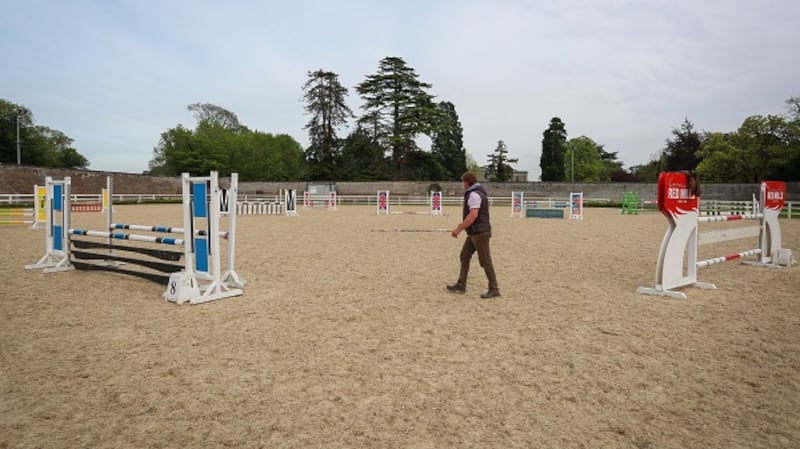
An Olympic-standard equestrian training facility situated in the old walled garden of Abbotstown House. The arena is designed for Showjumping, dressage, carriage driving, pony and eventing. The sand area is 100m x 55m and is a sand-fibre mix, replicating the London 2012 Olympic arena. The natural grass area is 121m x 32m. This is an elite training venue with a full set of showjumps available. There are 10 upgraded stables on site with space for horse boxes/lorries available.
Hockey
Hockey will soon have a home after wandering around clubs for the last number of years. A temporary pitch was used for some time in UCD but with a new water-based, high-spec surface replacing the non-international sand-based pitch that was originally on campus, the national teams will have a pitch of their own. The replacement surface is a new Polytan Polygras Toyko GT surface, similar to the one which will be used at the 2020 Olympic Games.
Cross-country
Fittingly the cross-country course is located just outside the office of twice cross-country world champion and Los Angeles marathon silver medallist John Treacy. It is a permanent track for both training and competition. The main loop measures 1,500 metres, with separate start and finish straights and incorporates two additional loops of 500 metres and 700 metres to enable different course routes and distances through both grassland and wooded areas. The European Championships will be run here next year.
Basketball/Judo/ Table Tennis / Tennis/ Bowling/ Archery/ Badminton/ Olympic handball
The National Indoor Training Centre is a large multi-sport venue, which can be subdivided into three international-size basketball courts, as well as a myriad of other configurations for other indoor sports. The hall has moveable seats which can house up to 1,200 people and it can be used as one, two or three halls, depending on the size requirements of the sport. The interior space is some 18,000m2, which is larger than the entire stadium dimensions of Croke Park.
Future plans
Construction will begin early next year on Ireland’s first velodrome for track cycling. Money has been allocated and approved and the building will take less than two years to complete. Another two sites on campus have been earmarked for a permanent cricket stadium and an athletics stadium. The configuration of both has not yet been finalised, with entry and exit areas as well as the required car parking for a large event yet to be decided. Tennis is also in the mix, with a possible relocation from DCU to a facility with both indoor and outdoor courts.








